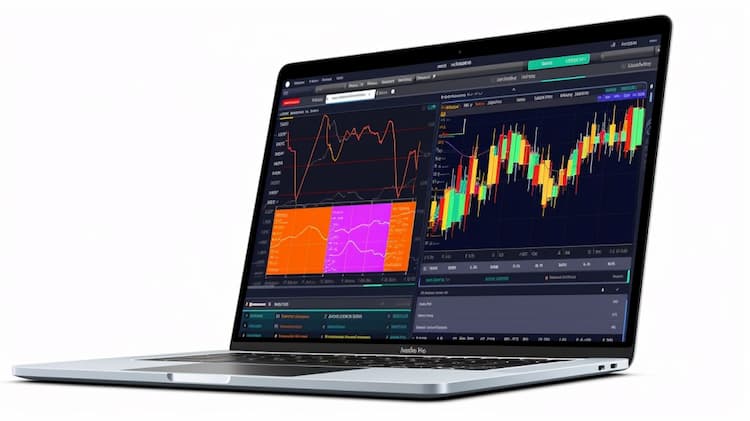
VOO VS SPY: Sectors and Top Holdings
In the fast-paced world of finance, staying ahead of the game is crucial for investors seeking optimal returns. Two popular exchange-traded funds (ETFs), VOO and SPY, have become synonymous with diversified investing. In this article, we will delve into the VOO vs. SPY debate, comparing and contrasting them from various angles to help you make informed investment decisions.
VOO VS SPY: Overview
Before diving into the specifics, let's understand what VOO and SPYrepresent. VOO stands for Vanguard S&P 500 ETF, while SPY represents SPDR S&P 500 ETF Trust. Both ETFs are designed to track the performance of the S&P 500 index, which consists of 500 of the largest publicly traded companies in the United States. They aim to provide investors with exposure to the broad U.S. stock market, making them popular choices for those seeking diversified equity investments.
VOO VS SPY: Sectors and Top Holdings
When comparing VOO and SPY, it's essential to consider the sectors they invest in and their top holdings. While both ETFs track the same index, there can be subtle differences that impact your investment strategy.
VOO typically holds a basket of S&P 500 stocks across various sectors, including technology, healthcare, finance, and consumer discretionary. This diversity can help spread risk and reduce the impact of a downturn in a particular sector. On the other hand, SPY's holdings also mimic the S&P 500, but its sector allocation may vary slightly at times.
Understanding the sector composition can be vital, especially if you want to align your investments with specific industries or sectors that you believe will outperform others in the future. VOO and SPY can provide insights into the overall health of these sectors through their holdings.
 VOO overlap VOO VS SPY
VOO overlap VOO VS SPY
VOO VS SPY: Capitalization Strategy
Capitalization strategy plays a pivotal role in investment decisions, and it's an area where VOO and SPY differ subtly. VOO, as part of Vanguard's ETF lineup, generally follows a strategy that aims to minimize costs. This translates into slightly lower expense ratios, making it a cost-effective choice for long-term investors. Lower expenses can lead to higher returns over time, as fees eat into your overall gains.
SPY, on the other hand, is managed by State Street Global Advisors and may have marginally higher expenses compared to VOO. However, it remains highly liquid and a preferred choice for active traders looking to capitalize on short-term market movements. Therefore, your choice between VOO and SPY may depend on your investment horizon and cost sensitivity.
VOO VS SPY: Tracking and Exposure
Tracking error and exposure accuracy are vital aspects of ETFs, especially when they aim to replicate an index like the S&P 500. VOO and SPY both aim to closely track the index's performance, but there can be slight differences.
Tracking error refers to the discrepancy between an ETF's returns and the returns of the index it tracks. While both VOO and SPY strive for minimal tracking error, there can be small variations. For most investors, these differences are negligible, but they can be crucial for high-frequency traders.
Exposure accuracy relates to how well an ETF replicates the index in terms of sector weightings, individual stock holdings, and dividend yields. VOO and SPY both aim for high exposure accuracy, but their strategies may cause minor deviations. Investors should evaluate these discrepancies based on their specific investment objectives and risk tolerance.
Conclusion
In the VOO vs. SPY showdown, there's no clear winner. Both ETFs offer compelling opportunities for investors seeking broad exposure to the U.S. stock market. Your choice should depend on factors like expense ratios, investment horizon, and personal preferences.
If you're a long-term investor looking for a cost-effective way to participate in the S&P 500's growth, VOO may be your go-to choice. On the other hand, if you prefer liquidity and intend to capitalize on short-term market movements, SPY might be more suitable.
Ultimately, it's essential to conduct thorough research, consider your financial goals, and consult with a financial advisor before making any investment decisions. The VOO vs. SPY debate highlights the importance of understanding the intricacies of investment options to maximize your returns.
Sources:
- Vanguard: https://investor.vanguard.com/etf/profile/VOO
- SPDR: https://www.ssga.com/us/en/individual/etfs/funds/spdr-sp-500-etf-trust-spy
VOO ETF issuer
VOO ETF official page
SPY quote and analysis
Discover the top holdings, correlations, and overlaps of ETFs using our visualization tool.
Our app allows you to build and track your portfolio.
To learn more about the SPY SPDR S&P 500 ETF Trust, access our dedicated page now.





